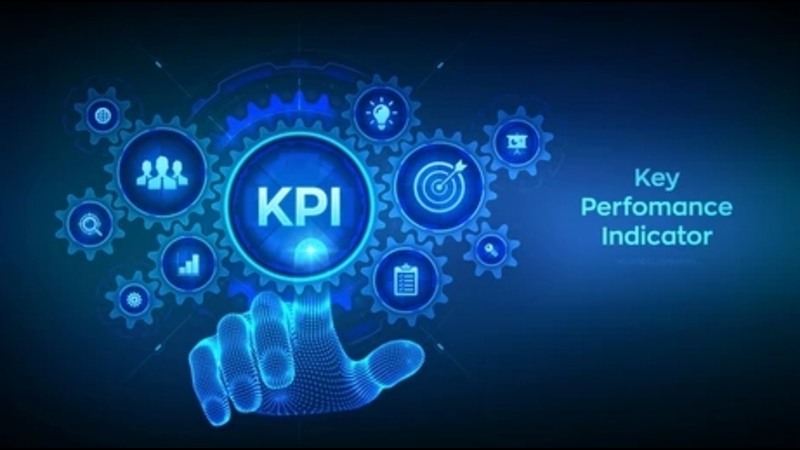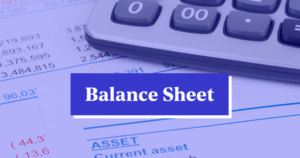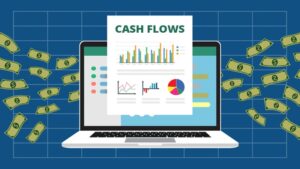In a world flooded with data, KPIs provide the focus that directs teams toward strategic goals. Key Performance Indicator (KPI) examples make these concepts practical, showing exactly how businesses can measure what matters.
This guide defines KPIs, explains their role in decision-making, and shares 25+ actionable KPI examples across key departments to help you track performance and drive growth.

What is a Key Performance Indicator (KPI)?
A Key Performance Indicator (KPI) is a measurable value that demonstrates how effectively a company is achieving key business objectives. Organisations use KPIs at multiple levels to evaluate their success at reaching targets.
While high-level KPIs may focus on the overall performance of the enterprise, low-level KPIs may focus on processes in departments such as sales, marketing, or a call centre. Essentially, KPIs are the critical signposts on the road to your strategic goals.
The Core Difference: KPIs vs. Metrics
The terms ‘metric’ and ‘KPI’ are often used interchangeably, but they are not the same. All KPIs are metrics, but not all metrics are KPIs. A metric is simply a quantifiable measure—it tracks an activity or performance. A KPI, however, is a metric that is directly tied to a strategic business objective. It is ‘key’ to your success.
| Aspect | Metric | Key Performance Indicator (KPI) |
| Purpose | Measures business activity. | Measures performance against a strategic goal. |
| Example | Number of website visitors. | Website Visitor to Lead Conversion Rate (if the goal is lead generation). |
| Focus | Operational data point. | Strategic outcome. |
The Anatomy of a Powerful KPI: Applying SMART Criteria
For a KPI to be truly effective, it must be well-defined. The SMART framework is a widely accepted method for setting powerful, actionable KPIs.
- Specific – target a clear area for improvement.
- Measurable – progress must be quantifiable.
- Achievable – ambitious yet realistic.
- Relevant – aligned with business goals.
- Time-bound – set a clear deadline.

Understanding the Types: Leading vs. Lagging KPIs
KPIs can also be categorized as leading or lagging indicators. A balanced approach using both is crucial for comprehensive performance management.
- Lagging Indicators: These measure past performance and track outcomes that have already occurred. They are easy to measure but hard to influence directly. Example: Monthly Sales Revenue.
- Leading Indicators: These are predictive measures that track inputs and activities expected to ‘lead’ to future results. They are harder to measure but easier to influence. Example: Number of Sales Demos Conducted.
Top 7 Sales KPI Examples to Boost Revenue
Sales teams run on data. Tracking the right sales KPIs is fundamental to understanding performance, diagnosing problems, and driving revenue growth.
Monthly Sales Growth
Tracks month-over-month sales revenue growth.
Formula: ((Current Month – Previous Month) ÷ Previous Month) × 100
Average Deal Size
Average revenue per closed deal, useful for forecasting and upselling.
Formula: Total Sales Revenue ÷ Number of Deals
Lead Conversion Rate
% of leads converted to paying customers; indicates sales effectiveness.
Formula: (New Customers ÷ Leads) × 100
Sales Target (Quota) Attainment
% of quota achieved in a period; shows team performance vs. targets.
Formula: (Total Sales ÷ Sales Target) × 100
Customer Lifetime Value (CLV)
Total revenue expected per customer over their relationship; key for strategy.
Formula: (Avg Purchase Value × Avg Frequency) × Avg Lifespan
Sales Cycle Length
Avg time to close a deal; shorter cycles mean faster revenue.
Formula: Total Days to Close ÷ Number of Deals
Customer Acquisition Cost (CAC)
Total cost to acquire a new customer; must stay below CLV for profit.
Formula: Sales & Marketing Costs ÷ New Customers

Top 6 Marketing KPI Examples for High-Impact Campaigns
Marketing efforts must be measurable to prove their value. These KPI examples help marketers track the success of their campaigns and justify their budgets.
Return on Marketing Investment (ROMI)
Revenue generated vs. marketing cost; key KPI for campaign effectiveness.
Formula: ((Sales Growth – Marketing Cost) ÷ Marketing Cost) × 100
Website Traffic-to-Lead Ratio
% of visitors turning into leads; shows website and CTA effectiveness.
Formula: (Leads ÷ Visitors) × 100
Cost Per Lead (CPL)
Avg cost to generate a lead; key for budget allocation.
Formula: Campaign Cost ÷ Leads
Landing Page Conversion Rates
% of landing page visitors completing desired action; shows page effectiveness.
Formula: (Conversions ÷ Visitors) × 100
Social Media Engagement Rate
Engagements relative to followers; reflects content resonance.
Formula: (Engagements ÷ Followers) × 100
Brand Awareness
Consumer awareness of a brand; tracked via traffic, mentions, and search volume.
Top 5 Financial KPI Examples for Business Health
Financial KPIs are the bedrock of business performance measurement. They provide a clear, quantitative assessment of a company’s financial health, profitability, and stability. Monitoring these ensures decisions are based on solid financial footing, similar to how traders rely on platforms like Ultima Markets for reliable performance data.
Gross Profit Margin
% of revenue above COGS; higher margin = greater efficiency.
Formula: (Revenue – COGS) ÷ Revenue × 100
Net Profit Margin
% of revenue left as net profit; ultimate profitability KPI.
Formula: Net Profit ÷ Revenue × 100
Operating Cash Flow
Cash generated from normal operations; key for financial health.
Formula: Net Income + Non-Cash Expenses – Change in Working Capital
Current Ratio (Liquidity)
Liquidity ratio showing ability to pay short-term obligations.
Formula: Current Assets ÷ Current Liabilities
Return on Investment (ROI)
Efficiency/profitability of an investment.
Formula: (Net Profit – Cost) ÷ Cost × 100
Top 5 Customer Service KPI Examples for Excellent Support
Excellent customer service is a competitive advantage. These KPIs help measure the efficiency, effectiveness, and quality of your support team, directly impacting customer retention and brand reputation.
Customer Satisfaction Score (CSAT)
Measures customer satisfaction with an interaction. CSAT provides quick feedback to improve support and is usually tracked with a 1–5 survey question.
Net Promoter Score (NPS)
What it measures: Customer loyalty and the likelihood of customers recommending your company to others.
Why it matters: NPS is a high-level indicator of overall customer happiness and a strong predictor of future growth. Positive customer reviews often correlate with a high NPS.
How to track: Based on the answer to a single question: “On a scale of 0-10, how likely are you to recommend our business to a friend or colleague?”
Average Resolution Time
What it measures: The average time it takes for the support team to resolve a customer issue after it has been opened.
Why it matters: A lower resolution time generally leads to higher customer satisfaction. This KPI highlights team efficiency and process complexity.
Formula: Total Resolution Time for All Tickets / Total Number of Tickets
First Contact Resolution (FCR)
What it measures: The percentage of customer issues that are resolved during the very first interaction.
Why it matters: A high FCR rate is a strong indicator of an efficient and knowledgeable support team. It reduces customer effort and improves their experience.
Formula: (Number of Issues Resolved on First Contact / Total Number of Issues) x 100
Customer Churn Rate
What it measures: The percentage of customers who stop doing business with a company over a given period.
Why it matters: Churn is a direct measure of customer retention. High churn can cripple growth, as acquiring new customers is far more expensive than retaining existing ones.
Formula: (Number of Customers Lost in Period / Number of Customers at Start of Period) x 100
How to Select and Implement the Right KPIs for Your Business
Knowing these KPI examples is only the first step. The real value comes from selecting and implementing the right ones for your unique business context. Follow these steps for a successful implementation.
Step 1: Align KPIs Directly with Your Strategic Business Objectives
Start with your overarching business goals. What are you trying to achieve? Increase market share? Improve profitability? Enhance customer loyalty? Each KPI you choose must have a direct and clear link to one of these strategic objectives. If a metric doesn’t help you measure progress towards a key goal, it’s not a KPI.
Step 2: Ensure Data is Accessible and Reliable for Tracking
A KPI is useless without accurate tracking. Ensure systems like CRM, analytics, or finance tools are in place, and keep KPI data reliable.
Step 3: Create a KPI Dashboard for Visualisation and Monitoring
Data needs to be easily digestible to be useful. A KPI dashboard provides a visual representation of your key metrics, allowing you to see performance at a glance.
This helps in spotting trends, identifying issues, and communicating progress to your team and stakeholders. Many businesses use specialised software or platforms like MetaTrader 5 to create customised dashboards for tracking financial performance and other key metrics.
Step 4: Regularly Review and Adjust Your KPIs
Your business is not static, and neither should your KPIs be. Set a regular cadence (e.g., monthly or quarterly) to review your KPIs. Are they still relevant? Are they driving the right behaviours? Are your targets appropriate? Be prepared to adjust your KPIs as your business goals and market conditions evolve.
Conclusion
Effective KPIs guide strategy, align teams, and drive growth. Start with a few KPI examples per department, track them consistently, and adjust as goals evolve.

FAQ
What are the 4 main types of KPIs?
Four main KPI types are:
• Strategic KPIs – track major goals like revenue growth.
• Operational KPIs – measure short-term processes, e.g. sales cycle.
• Functional KPIs – department-specific, e.g. Cost Per Lead.
• Leading/Lagging KPIs – predict outcomes vs. measure past results.
What is a simple but powerful KPI example?
A simple but powerful KPI is Customer Acquisition Cost (CAC). Comparing CAC with Customer Lifetime Value (CLV) quickly shows if growth is profitable or not.
How do you write a KPI statement?
Write KPI statements using SMART: Action Verb + Metric + Value + Timeframe.
Example: “Increase monthly recurring revenue from $50,000 to $75,000 by end of Q3.”
What is the key difference between an OKR and a KPI?
OKRs set ambitious goals with measurable results; KPIs track ongoing performance. Poor KPI results (e.g. high churn rate) can trigger a new OKR.
How many KPIs should a department or company track?
Less is more. Best practice: 3–5 KPIs per department, 5–7 company-wide. Focus on the most strategic KPIs, not every metric.




